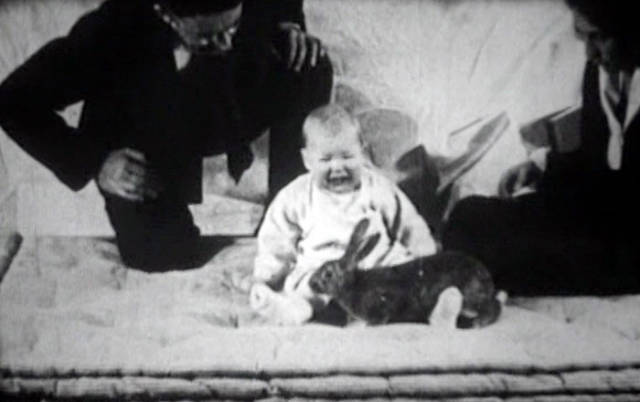Little Albert Experiment

This controversial experiment was conducted in 1920 by John Watson and Rosalie Rayner at Johns Hopkins University. A one-year-old baby called Albert was put on a mattress on a table in the middle of a room. A white laboratory rat was placed near Albert and he was allowed to play with it. At this point the experimenters made a loud sound behind Albert's back by striking a suspended steel bar with a hammer each time the baby touched the rat. Albert responded to the noise by crying and showing fear. After several such pairings of the two stimuli, Albert was presented with only the rat. Upon seeing the rat, Albert got very distressed, crying and crawling away. Apparently, the infant associated the white rat with the noise. The rat, originally a neutral stimulus, had become a conditioned stimulus, and it was eliciting an emotional response (conditioned response) similar to the distress (unconditioned response) originally given to the noise (unconditioned stimulus).
In further experiments, Little Albert seemed to generalize his response to the white rat. He became distressed at the sight of several other furry objects, such as a rabbit, a furry dog, and a seal-skin coat, and even a Santa Claus mask with white cotton balls in the beard.
The experiment had many failings by modern standards. For example, it had only a single subject and no control subjects. Furthermore, such an experiment could be hard to conduct in compliance with current law and regulations, it is now generally considered to be one of the more unethical psychological experiments conducted throughout the years.